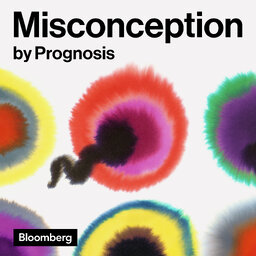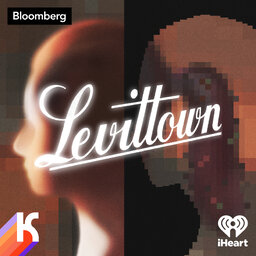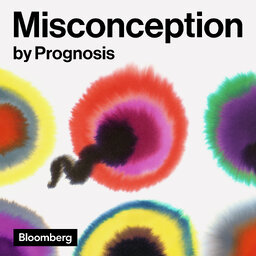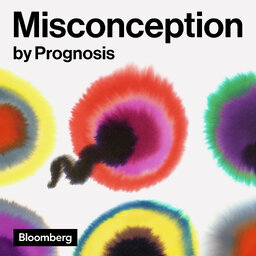Prognosis: Misconception
Reality TV stars are freezing their eggs on camera. Lawmakers in DC are debating federal protection for IVF. Hundreds of millions of dollars are being… Introducing: Levittown03:10
Introducing: Levittown03:10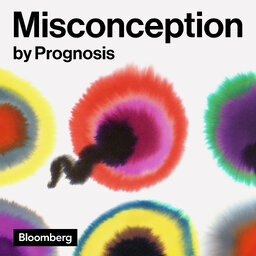 Listen Now: Beak Capitalism from Odd Lots00:59
Listen Now: Beak Capitalism from Odd Lots00:59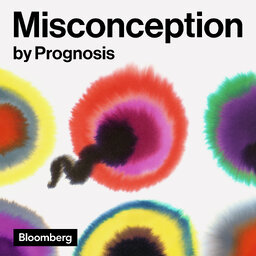 Misconception: Great Expectations18:42
Misconception: Great Expectations18:42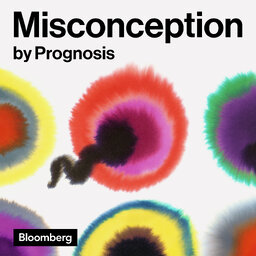 Misconception: Big Baby24:07
Misconception: Big Baby24:07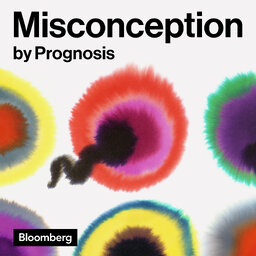 Misconception: Money Money Money26:51
Misconception: Money Money Money26:51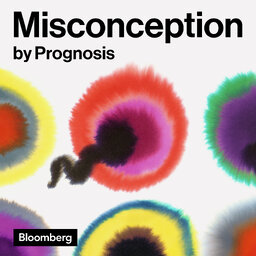 Misconception: The Baby Boom23:53
Misconception: The Baby Boom23:53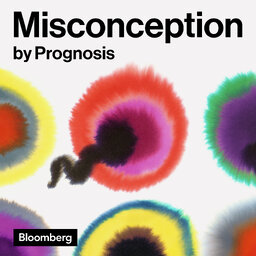 Introducing: Misconception01:00
Introducing: Misconception01:00 Introducing: Bloomberg News Now00:51
Introducing: Bloomberg News Now00:51 Introducing: Elon, Inc.00:42
Introducing: Elon, Inc.00:42 Covid Cures and Conspiracies Introducing: The Deadly Cure06:09
Covid Cures and Conspiracies Introducing: The Deadly Cure06:09 Introducing: Crash Course01:52
Introducing: Crash Course01:52 Targeting the Toughest Diseases (Sponsored Content)17:57
Targeting the Toughest Diseases (Sponsored Content)17:57 Losing It: Gut Instinct56:25
Losing It: Gut Instinct56:25
At long last, it's the day of Kristen’s retrieval. As she waits to find out her results, she investigates why so many people are freezing their eggs now — and whether there is any science on the horizon that could make things easier for future generations.
It feels like there's not enough room in my body for my ovaries right now, Like I can feel how big they are every time I sit up, or laugh or sneeze. It's a really weird feeling. After ten days of injecting myself with hormones, my ovaries had swollen to the size of two big, juicy lemons. This was to be expected. The drugs had rebbed up my reproductive system so that doctors could retrieve as many eggs as possible from it. The days of hormones had made me bloated and exhausted and cranky, but it was the trigger shots that really got to me. After giving myself a final two shots that would make the eggs, I was growing all release at once. I felt almost like I had the flu. The big day had arrived, the day of my retrieval, or as I called it, the harvest. I had fasted since midnight and arranged for my friend picked me up after the procedure. Stub was still living in Scotland, but had frozen his sperm a few weeks earlier after we'd agreed to move forward. Now I was just taking through the to do list i'd been given one last time. Let's read through this sheet of paper. Assessors do not eat after midnight. An estesiagists will review my medical and surgical history and begin an intravenous line for sedation. The egg rechieval procedure takes approximately fifteen minutes from start to finish, so all this has been leading up to fifteen minutes. I was feeling nervous. Nervous because I'd never had any kind of surgery before, and at this point in the process it was clear that freezing eggs or embryos is a serious medical procedure. I was also nervous because I didn't know if it would work. I know, I'm not gonna get like twenty eggs because I don't even seem to have twenty follicles. But I'm hoping that there's like ten good mature ones. I think that's like a pretty conservative hope. I think at the max, maybe I could get like fifteen or sixteen. At my age, that would be amazing. That's like you go, ovaries, you go. This was one of those cases in which knowing a lot about the topic did not make me feel any better. Will my eggs be good quality and then even of darker quality, will they mesh well with Stew's sperm. Because there's a possibility that I get sixteen eggs and we don't even get one embryo. That seems unlikely, but it's possible. Or you know, if we only get one, then I'm gonna have to go through this whole thing again. I'd arrived at NYU's big, gleaming fertility center on fifty third Street. The half hour cab ride had not settled my nerves, so I'm just getting changed to go in. I can't bring my phone or my recorder in there, so I think this will be the last dispatch until after I was about to find out whether this ridiculous gamble was gonna pay off. Feeling nervous, really very nervous. Okay, if you're an extremely type A control freak like me, The next part of the whole process is the hardest. I'd done everything I could to stack the odds in my favor. I had researched clinics and picked one with a good reputation. I'd improve my diet and cut out booze and caffeine. I even took prenatal vitamins. I mean, it couldn't hurt. Now, The fate of my frozen potential future children would be in the hands of lab techs, the part of the process patients don't get to see, but also maybe the most important part. I'm Kristen B. Brown, and this is misconception.
Yes, so this is umber number one. See how pretty is this? So I'm gonna go in and suck it up with my feet.
I'm in the lab of the Manhattan branch of CCRM, a national fertility clinic chain. Manuela Mullinari is walking me through her day to day. She's an embryologist and the lab director.
So you've put.
The embryos into the.
Little wells there, smith, Nope, one of each, because I need to know which one is what I'm doing genetic testing to them.
What you're hearing is a Manuela very carefully sucking a couple's embryos out of a Petri dish in order to biopsy them and send them for genetic testing. I cannot emphasize enough how tiny these things are. Barely visible to the naked eye if you have really good eyesight, which I do not.
Now I'm using a big magnification to see very well all the structures of the embrassy This is the ICM, the compacted cells that are going to make the baby. And these are the traffecta themselves. These are the cells that are going to make the placenta.
And you could not see anything with your naked eye or not.
Nope, it's as big as a grain.
So we need to magnify it forty times to be able to see it this way.
And Manuela had moved the embryos onto this crazy looking microscope that was outfitted with a laser and these two really fine needles that she could control. I was watching what she was doing on a video screen, a grainy gray mass of cells, all bubbly and lumpy.
So now I'm just gonna last night laser and I'm going to zip it.
See this has to be one of the craziest things I've seen in my reporting career. And Manuela uses this tiny needle to poke a hole in the side of the embryo and then suck out just a few cells.
I use this technique as called flicking technique. I don't pull it. I don't like to. I'm not a puller.
And then with a laser, she just lops those cells off to send them in for testing.
You understand it. It's a little bit like playing video games.
Right, yeah, totally, So that's the laser.
Yeah and boom done.
Wow. This whole idea of assisted reproduction, it can feel so high tech, but what I was realizing was that it's extremely manual. It's a Manuela and our colleagues carrying around embryos in a cramped lab with music pumping. They're doing a lot of things by hand checking each other's work. Is they move stuff around in a lab to make sure there are no mix ups. This is a side of the whole process. Most patients don't get to see. They talk with their doctors, but they don't see the lab. They probably don't even consider the role that people like Manuela play in their quest for parenthood. And Manuela walked me through some other parts of her day, like freezing embryos.
Concentration of water decreases and the cryprotectant gets into the embryo, it will start to slowly sink down to the bottom.
And look how it looks now, all crunched up, looks like a cookie.
At the end of the day, I was struck by how much skill and finesse her job requires. Manuela isn't just a scientist. She's an artist. It talked to Williams. Schoolcraft, the founder and chief medical officer of CCRM, about the role the lab plays in a patient's success.
A friend of mine made a list of all the variables in the IVA flab in one IV of cycle. There's two hundred different variables. There's thirty five five ingredients just in the culture media. Then the media, which is the liquid the embro's grown and is overlaid with oil. There's protein in the media. There's the Petrie dish. There's the instruments called the pipe pets that handle the embros. There's the quality of the air, the settings of the incubator, on and on the list goes, and any of those factors. Let's say a Petrie dish that had toxicity to an embro. If you put good media, good protein, good oil in and you put an inmbro in but the dish is bad, the embro will get killed.
The finesse of an embryologist isn't even the only variable in the lab that matters. Another fertility doctor I spoke with Setis Clinic discovered the oil on the door hinges was impacting their success rates, and so now they use plastic hinges. Embryos are so fragile keeping them alive outside of a human womb. It's hard.
It's a game of perfection, and I would say it's just being very careful to not induce stress to the embro. So the less we can stress them, the more we can make the inbro think it's in the human Filippian tube, growing in nature, even though it's outside the body, in a petri dish, in an artificial incubator with different pH and CO two and osmilarity. The better we're going to do.
I was feeling stressed about my embrew. As being stressed, it was starting to feel like it's a miracle that this ever works at all. We'll be right back. As I was waiting to hear how all my microscopic eggs had fared after my retrieval, I started thinking about what had brought me here in the first place. The time on my biological clock was running out, and I was in no position to start a family. It's not an uncommon story these days. It's a big part of why both egg freezing and IVF are booming. But neither of those things can really stop your biological clock existing. Reproductive technologies can press pause on your fertility or give it a little boost, but once your eggs are too old or gone, that's it. When I looked at success rate data on IVF over the past twenty years, I was shocked to see that rates had barely improved for women over forty two. The number hadn't really changed at all. A doctor who had been involved in the data analysis explained why to me. She said that if you're infertile, there's just only so much technology can do for you. There's a limit to how successful IVF an egg freezing can be. I wondered, then, if anyone was trying to address the root cause here, the rapid aging of human ovaries. That's when I met Daisy Robinson.
Our ovaries undergo rapid decline, you know, after age thirty thirty five, and so I became obsessed with this idea of how our ovaries age at an accelerated pace.
Daisy is a Harvard PhD. And she teamed up with two other scientists from Massachusetts General Hospital, David Peppin and Pat Donaho. They started a company that is actually trying to slow the aging of the ovaries. Their company is called oviva. Key to that aging they think might be a hormone called AMH.
AMH controls our ovarian reserve and how many eggs you know are leaving at any given point in time.
You might remember AMH from episode one. It's the hormone I got tested to try and figure out if I was still fertile. The idea here is that if you can regulate AMH, you could control how fast or slow those eggs leave the ovaries. You could slow that aging down. Eventually, they want to create a drug that you could use to slow ovarian aging, to extend your years of fertility, or even delay menopause indefinitely. Their first drug target is for patients not responding well to fertility treatments.
If you take a garden hose and you put a kink in it, it blocks the flow of water. When you release the kink, there's a spurt followed by a normal flow of water, and the amh's drug works sort of like this. You get this spurt, so this wave of eggs that are released all at the same time that's greater than normal. You have a greater number of eggs you can actually capture.
Generally speaking, more eggs mean better odds in the fertility world. A lot of doctors and scientists I spoke to you for this series mentioned to me that it's been more than a decade since there's been any radical shift in the science behind IVF. Daisy's co founder, David Peppin was one of them.
Frankly, it's kind of shameful there. There are a number of women's health indications like say, passistic of Aaron syndrome or endometriosis are huge affecting a large proportion of the population that I have been understudied for so long, and so it's part of a general trend of women's health for being ignored, and hopefully we're starting to see some signs that this is changing and there's more attention being paid.
It actually seems like we're at a really exciting moment. This growing interest in fertility is just now starting to lead to new science and technology that could really move the needle. Aviva is a young company. So far, David has just shown the effect of aimage drugs on cats and mice. There's still a few years away from clinical trial in humans, let alone having a drug on the market, but things are happening.
I'm actually quite hopeful. There's actually quite a bit of research that has been going on, you know, serve slowly in animal models that could translate into massive leaps in terms of reproductive technology if they are applied to humans.
Researchers today are investigating things like how to grow immature eggs in a putrid dish, which could increase the odds of IVF, and scientists in Japan are even trying to make eggs and sperm from stem cells. That would be a game changer not just for patients dealing with infertility, but also LGBTQ families. So far, they've been successful in mice, they made pups from two mouse dads. Robotics and artificial intelligence could bring improvements to IVF clinics and labs even sooner. A company called Overture is one amongst several that it is working to automate some of what an embryologist does, which could help eliminate human error. Many more are using AI to try and fine tune processes, including dosing medications and selecting the best embryo. So much of human reproduction is still a black box, and we were really just starting to peer inside of it. All right, are you there? Yep, and here can you hear me?
Okay yep.
The day after my egg retrieval, my doctor gave me a call to see how I was doing. How are you feeling today? Ah, just low energy, but otherwise actually better than before the procedure.
I'm on good yeah.
Yeah.
Are you making any pain medication?
I've been taking just two ibuprofen like every time. Honestly, even though I was still extremely bloated and tired and well constipated, I was elated. I'd gotten sixteen eggs. That was more than I had ever imagined. I was pretty proud of my now thirty seven year old ovaries. But also I knew that this was just the first stage any long battle of attrition for my little eggs. Now I was going to find out how they fared at the next stage, fertilization. Are you ready for your results?
Yes?
You did great.
Of my sixteen eggs, fourteen were ripe, one was undeveloped, and another, as my doctor put it, was overcooked. Thirteen of those fertilized, So in twenty four hours I had already gone from sixteen eggs to thirteen nimbreos, and only eleven of those were completely normal.
This is an awesome start, sir.
I guess continuation yesterday. It was a good start.
It's good step too.
We were going to have to wait a bit longer to find out where we really stood. So I will have all of the information next Saturday for you in terms of what made it to the embryo stage. And then the genetic testing takes another you know, seven to twelve days after that to come back. Okay, cool, Well, thank you so much.
You're welcome, very positive so far.
It's good.
I'm super happy with the results so far.
I have a great day.
Thanks.
Okay. Ye. That two weeks was agony. I am not a patient person. It also gave me a lot of time time to think about everything that had transpired so far. It was going well, but I was feeling kind of burnout and kind of broke. Even with my great insurance, I had been hit by more than one unexpected medical bill. I still couldn't help but feel like somehow winding up in this position was my fault. I felt guilty, like I had taken a wrong turn. Somewhere. I read a book by Yale anthropologists called Motherhood on Ice by Marsha and horn In. It She interviews one hundred and fifty women who froze their eggs, and when I read it, it was striking how many of them had stories like mine. It was cathartic. She concluded that there's a mating gap. The society had changed in a way that just made it harder to start a family earlier in life. Eighty two percent of the women in her study were single with no partner in sight. The rest were either in unstable relationships with men or waiting for their partner to be ready for parenthood. In a way, egg freezing is a technological solution to what is ultimately a social problem. When I talked to her, she said she thought egg freezing is sort of a stop gap, something that works for a lot of people, but is an imperfect solution. I feel hopeful, though our understanding of female biology is changing every day. In the future, maybe single thirty something women won't have to go through any of this, or maybe even if they do, at least their insurance will cover it. After two weeks of waiting, my doctor called with our results. Our final count of embryos STU was an edenberg, so I called them to share the news. So are you ready for it.
Yeah, what what's the news? Tell me?
It's good news. We got four for like.
That are healthy and to have all the right stuff in the right places.
Yeah, so we don't have to do it again.
Oh, I'm still pleased for you, especially because I know it's been really bloody tough.
We had four embryos, three boys and one girl. So how do you feel about it?
You know, it's really good to know that we have that sort of option. There these little frozen embryos that they are sitting there, and you know you could pull about and use them at whatever point we decide. I'm glad you, glad you told me.
Yeah, I was thinking about not ever telling you.
Actually, I'm thinking about just like withholding this information. Yeah, let me wonder.
I mean I would I would have asked you at some point, like what happened if you heard back about that.
Since we froze embryos in July, a lot has happened. Stu moved to New York, and we got married. Kids. Still feel a bit down the line, but I think in the end we're glad to have our little embryos on ice. Our journey still isn't over. We might use those embryos one day, that is, if we can afford to keep paying for them. The day after I finished the script, I got an email from our fertility clinic. They were raising our embryos rent. This series was written and reported by me Kristen V. Brown. It was produced by Jilda Decarley and Stacy Wong and edited by Cynthia Koons. Additional research was done by Tana's Mcjohnny. It was engineered by Blake Maples. Our theme music was composed and performed by Hannis Brown. Special thanks to Shelley Banjo, Randy Shapiro, Anna Maazarakis, Jeff Grocott, Lauraszlenko, and Creighton Harrison. Sage Bauman is Bloomberg's head of podcasts. Thanks for listening.
 Prognosis: Misconception
Prognosis: Misconception